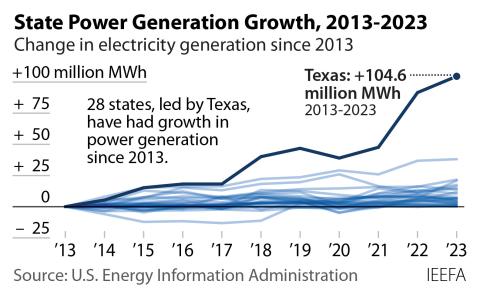Neither the Fine Print Nor a Review by Moody’s Shed an Honest Light on Prairie State’s Dark Finances
Ratings-agency reviews this week of new debt offerings associated with Prairie State Energy Campus, and the fine print in the bond offering itself, simultaneously illuminate and obscure the financial and operational failures of the power plant in southern Illinois.
The reports by the ratings agencies — one by Fitch Ratings, the other by Moody’s — take very different views of Prairie State’s tangled finances, and of its prospects for recovery.
Both agencies see the municipalities that are stuck with high rates for Prairie State electricity most likely continuing to pay those rates. The question is for how long.
Fitch takes the deeper, more serious look, peering into the books of 21 participating Ohio communities and finding weakening finances. Moody’s, by contrast, skips the local research and concludes everything is fine. So, stable is the outlook at Moody’s; negative is the view at Fitch (which also lowered its rating three notches from “A” to “BBB).
Fitch, much to its credit, holds Prairie State to its original electricity-price estimates, and notes that those estimates have long been vastly exceeded, implying that the customers who are tied into long-term contracts with the plant simply cannot continue to see rates keep going up. Fitch finds that high rates are already draining local cash reserves and hurting municipal credit ratings. Moody’s, to its discredit, concludes that the high cost of Prairie State electricity is competitive, and it takes no note of the deteriorating financial condition of customer cities.
Debt documents submitted for review by AMP Ohio, the largest participant in the Prairie State portfolio and the link between Prairie State and many member communities, are also supposed to shed light on Prairie State’s dark finances. But they don’t. The documents put 2014 rates for electricity at $73.66 per megawatt hours and assert that they will drop in 2015 to $71.38 megawatt hour. These numbers are presented by AMP after an almost incomprehensible explanation of how various internal subsidies are being used to depress rates that would otherwise be even farther off the chart than they are now. While it’s clear that the rates Prairie State is charging are not based on the real cost of electricity from the dysfunctional plant, it would take a team of auditors to figure out the full truth behind AMP’s many tangled cross-subsidies.
As for the rates being competitive, nothing could be further from the truth. The communities tied to Prairie State — if they weren’t locked into such ill-advised contracts — would be able to get electricity off the open market for about half what they’re paying for Prairie State’s. Prairie State’s rates for electricity are captive, to put it bluntly, not competitive.
Moody’s relies nonetheless in its review of the new bond offering on a vague standard of competitiveness that muddies the kind of clear and concrete information investors deserve. Crucial facts that go overlooked include that Prairie State produces electricity at far above market prices and far above the original estimates used to encourage local governments to sign on.
Fitch—again to its credit—is worried about shrinking cash reserves of member municipalities now and in the future. Moody’s—again to its discredit—seems to suggest a simplistic way forwarding in which communities presumably cut other services to keep up with electricity-rate increases.
Meanwhile in Illinois, some of the same people who put out the Moody’s report on Prairie State have incongruously placed the municipality of Batavia, Illinois, on a negative credit watch due in no small measure to its exposure to the Prairie State plant. Citing rate pressure from Prairie State debt, Moody’s outlook for Batavia is decidedly negative.
Moody’s notes, too, that Batavia’s trouble is rooted also in off-balance-sheet debt, something Batavia is trying to correct — and a problem faced by every community in the Prairie State consortium. If those many debts were brought onto the books, significant numbers of communities would violate state debt standards.
The people are restive, and at least some officials and their citizenry are starting to wonder. Residents of Batavia have started litigation. The SEC has subpoenaed AMP and Peabody Energy. Paducah has fired the head of its power agency and brought in new board members.
Any truly independent look at Prairie State would raise eyebrows. Yet last year, when several elected officials from AMP communities asked Ohio Attorney General Mike DeWine for an investigation, he demurred. DeWine and Moody’s are in the same camp, it seems, the one that can’t be bothered with hard questions.
Tom Sanzillo is IEEFA’s director of finance.











